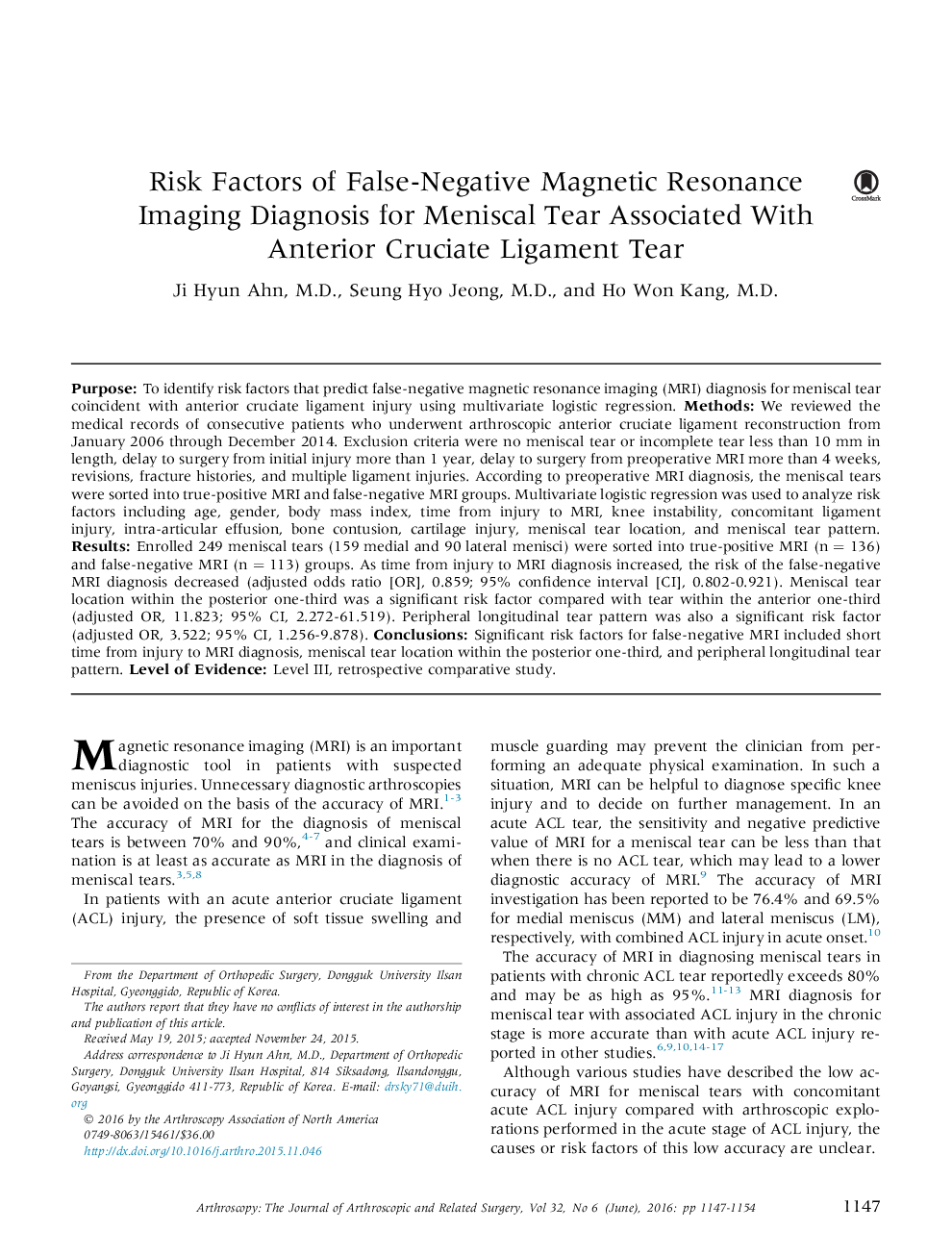| Article ID | Journal | Published Year | Pages | File Type |
|---|---|---|---|---|
| 4041856 | Arthroscopy: The Journal of Arthroscopic & Related Surgery | 2016 | 8 Pages |
PurposeTo identify risk factors that predict false-negative magnetic resonance imaging (MRI) diagnosis for meniscal tear coincident with anterior cruciate ligament injury using multivariate logistic regression.MethodsWe reviewed the medical records of consecutive patients who underwent arthroscopic anterior cruciate ligament reconstruction from January 2006 through December 2014. Exclusion criteria were no meniscal tear or incomplete tear less than 10 mm in length, delay to surgery from initial injury more than 1 year, delay to surgery from preoperative MRI more than 4 weeks, revisions, fracture histories, and multiple ligament injuries. According to preoperative MRI diagnosis, the meniscal tears were sorted into true-positive MRI and false-negative MRI groups. Multivariate logistic regression was used to analyze risk factors including age, gender, body mass index, time from injury to MRI, knee instability, concomitant ligament injury, intra-articular effusion, bone contusion, cartilage injury, meniscal tear location, and meniscal tear pattern.ResultsEnrolled 249 meniscal tears (159 medial and 90 lateral menisci) were sorted into true-positive MRI (n = 136) and false-negative MRI (n = 113) groups. As time from injury to MRI diagnosis increased, the risk of the false-negative MRI diagnosis decreased (adjusted odds ratio [OR], 0.859; 95% confidence interval [CI], 0.802-0.921). Meniscal tear location within the posterior one-third was a significant risk factor compared with tear within the anterior one-third (adjusted OR, 11.823; 95% CI, 2.272-61.519). Peripheral longitudinal tear pattern was also a significant risk factor (adjusted OR, 3.522; 95% CI, 1.256-9.878).ConclusionsSignificant risk factors for false-negative MRI included short time from injury to MRI diagnosis, meniscal tear location within the posterior one-third, and peripheral longitudinal tear pattern.Level of EvidenceLevel III, retrospective comparative study.
